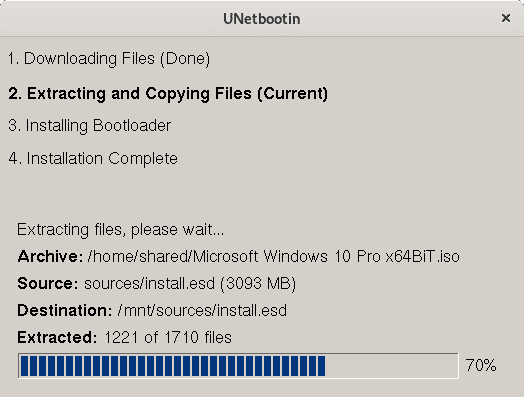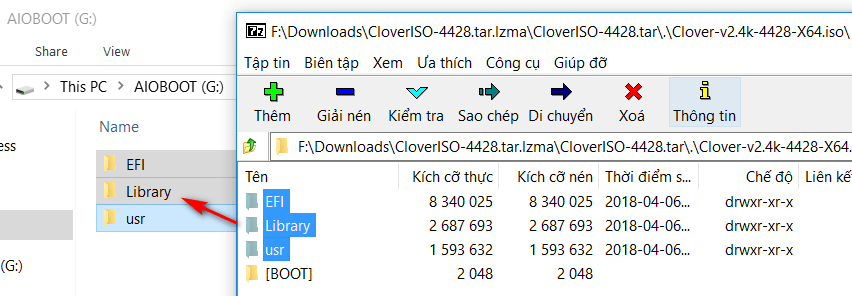
- Install bootloader on usb for windows on linux install#
- Install bootloader on usb for windows on linux windows 10#
- Install bootloader on usb for windows on linux iso#
- Install bootloader on usb for windows on linux free#
With that set, just hit the “Make Startup Disk” button. It should also automatically find the Ubuntu ISO. Your plugged in USB should be recognized. On Ubuntu, you can find the Startup Disk Creator tool.

Now, plug in the USB with at least 4 GB in size.
Install bootloader on usb for windows on linux iso#
First, download the ISO image of Ubuntu from its website. Now that you know the reason, let’s go on with creating live Ubuntu USB. You boot from the live USB and make the necessary partition on the disk from the live session. You won’t be able to modify it and create a new partition in it. When you are using Linux, your disk is mounted. But you cannot modify an already mounted partition in Linux.
Install bootloader on usb for windows on linux free#
The reason is that you need to modify the existing partition and make some free space where you’ll be installing Windows. You may wonder why you need a live Ubuntu USB here when you already have Linux installed properly. Remove the bootable Windows USB at this stage. Without that, there will be no point in following the rest of the tutorial. This check was necessary because you need to have a working bootable Windows USB. Close it and power down your system and then boot into Linux again. If the bootable Windows USB creation was a success, you should see Ventoy screen and select to boot into Win10.Īfter this, you’ll see some screen about Windows installation.

In some cases, you may have to disable secure boot from the BIOS settings. When you are in the BIOS, choose to boot from the USB. When the system is turning on again and showing the logo of your system’s manufacturer, press F2/F10/F12 keys to access the BIOS settings. How do you do that? Plug in the Windows USB, reboot your system. So now that you have a bootable Windows USB, it will be a good idea to test it out and see if works. Click on the unmount option from the file manager. Once the copying finishes, DO NOT RUSH to plug out the USB just yet. You need to copy the download Windows ISO image to Ventoy partition. Once installed, you’ll see two partitions on the USB disk: VTOYEFI and Ventoy.
Install bootloader on usb for windows on linux install#
Go for UEFI installation and hit the install button. It will open a web page with Ventoy running in it.

It will give you the URL when you run it. Extract the folder and run the VentoyWeb.sh script with sudo. Next, download the latest Ventoy release. Now, download the ISO of Microsoft Windows. Plug in your USB with at least 8 GB of size and format it. Please refer to the guide for detailed instructions.
Install bootloader on usb for windows on linux windows 10#
I have written in detailed about creating bootable Windows 10 USB on Linux. Thankfully, a handy open source tool called Ventoy helps a lot in this case. If you only have a Linux system, creating a bootable Windows USB could be tricky. If you have access to a Windows system, you can follow the instructions on the Microsoft website to create a bootable Windows media. How do you make a backup? The simplest method is to have an external USB or SSD disk and copy files from Documents, Music, Pictures and other folders where you have kept your files. In the worst case, if things go wrong, you can install either of Windows or Linux and copy the data back on your system. Having a back up on an external disk will give you a safety net. You are going to play with disk partitions and boot settings. I highly recommend that you read the entire tutorial first before you start following the steps. You create the live Linux USB first, make the partition for Windows using this live Linux USB, and then use the same USB key as a bootable Windows USB. You may also manage this tutorial with just one USB key.

On the boot, you select whether you want to use Windows or Linux. When it comes to dual boot, the general idea is that you have a system preinstalled with Windows and then you install Linux alongside Windows.


 0 kommentar(er)
0 kommentar(er)
